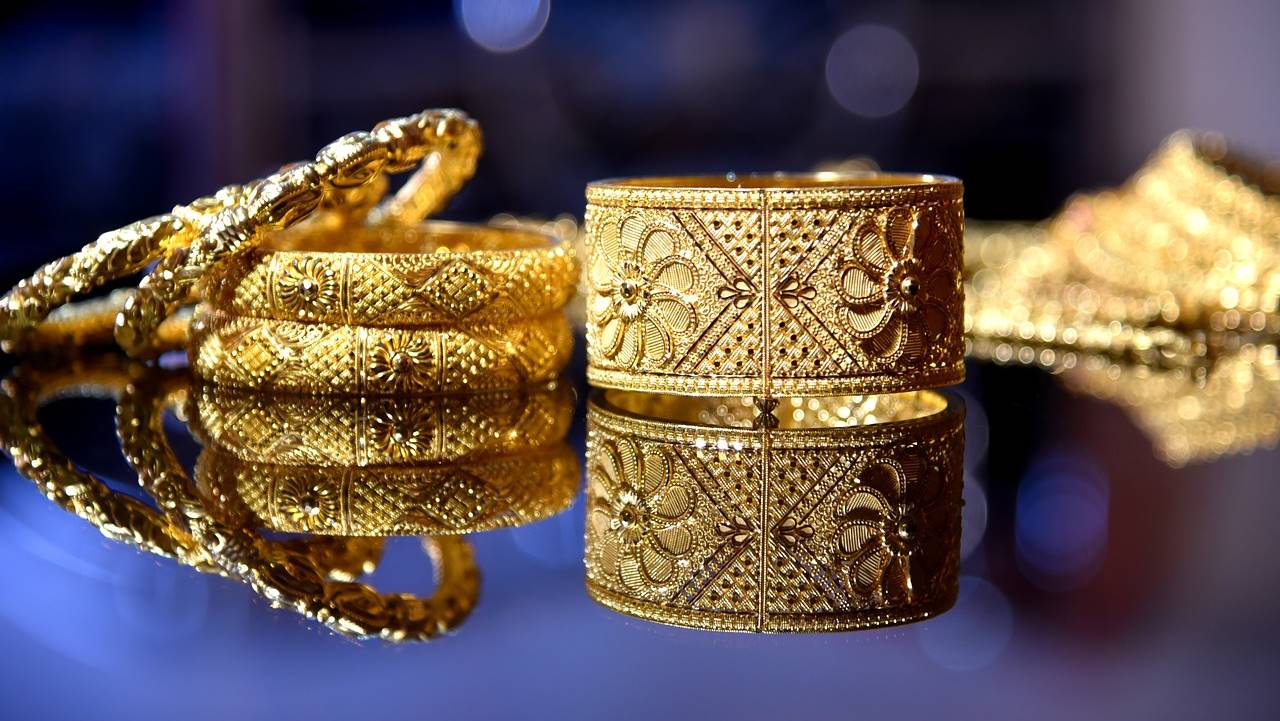Gold jewelry has been cherished and adorned by civilizations throughout history. From ancient times to modern trends, the allure of gold has captivated people’s hearts and remains an enduring symbol of wealth, beauty, and prestige.
Gold is used to make jewelry because it is lustrous and attractive and malleable. Therefore, Gold is commonly used in making ornaments. jewelry made in gold do not undergo corrosion due to attack by moisture and atmospheric gases.
Gold is used to make jewelry because of the attractiveness of its luster and because of its rarity. It also doesn’t tarnish and doesn’t react with air the way a metal like iron does. Since it is malleable, it can be beaten into very thin sheets. … Therefore, gold is alloyed with other metals to make it stronger.
The history of gold jewelry dates back thousands of years. The earliest evidence of gold ornaments can be traced to ancient civilizations such as Mesopotamia and the Indus Valley. These early pieces were often simple in design, such as gold beads and pendants. Gold’s malleability and luster made it a preferred choice for adornments, and its scarcity made it a symbol of status and wealth.
A pair of gold basket-shaped hair ornaments, from the Isin-Larsa Period (2004 – 1595 BCE), discovered in the royal cemetery of Ur, Iraq, is amongst the oldest representatives of ancient Mesopotamian jewelry.
Gold has been used to make jewelry since as far back as 4000 BCE, in Eastern Europe, and 3000 BCE, in Iraq. The metal is associated with divinity, wisdom, perfection, and permanence. It does not tarnish and is the easiest metal to use for creating intricate jewelry due to its softness and malleability. The purity of gold is measured in karats, where 24 karat gold represents 100 percent gold. The addition of metals to pure gold affords a great variety of color, strength, purity and cost. Yellow gold is an alloy of gold, silver and copper.
The ancient civilizations of Egypt and Mesopotamia are credited with starting the organized production of jewelry. Egypt became the leading force of jewelry manufacture due to its advanced knowledge of metallurgy, access to precious metals and gemstones, development of innovative jewelry-making techniques. Everyone – male and female, young and old, and poor and rich – wore jewelry, in ancient Egypt. A widespread belief in the magical properties of jewelry existed in the region. Jewelry was worn, primarily, for protection from evil, disease, adversity, and misfortune.
The Victorian era witnessed a shift in gold jewelry trends, emphasizing sentimental and symbolic motifs. Lockets, mourning rings, and charm bracelets became popular, reflecting the romantic ideals and personal connections of the time.
The late 19th and early 20th centuries saw the rise of two influential art movements: Art Nouveau and Art Deco. Art Nouveau celebrated organic forms and flowing lines, while Art Deco embraced geometric patterns and bold colors. Gold jewelry of this era incorporated these artistic principles, resulting in striking pieces that showcased both innovation and luxury.
In the modern era, gold jewelry continues to be a fashion statement and a symbol of status. Designers experiment with various styles, combining gold with other metals, gemstones, and unconventional materials.
Gold jewelry not only holds aesthetic value but also serves as a form of investment. The price of gold has historically shown stability and resilience, making it a sought-after asset. When purchasing gold jewelry as an investment, factors such as purity, weight, craftsmanship, and market value should be considered. It is advisable to consult with a reputable jeweler or financial advisor for guidance.
Gold jewelry has a prominent presence in pop culture and the world of fashion. Celebrities and influencers often flaunt elaborate gold pieces on red carpets and social media, setting trends and influencing consumer preferences.
